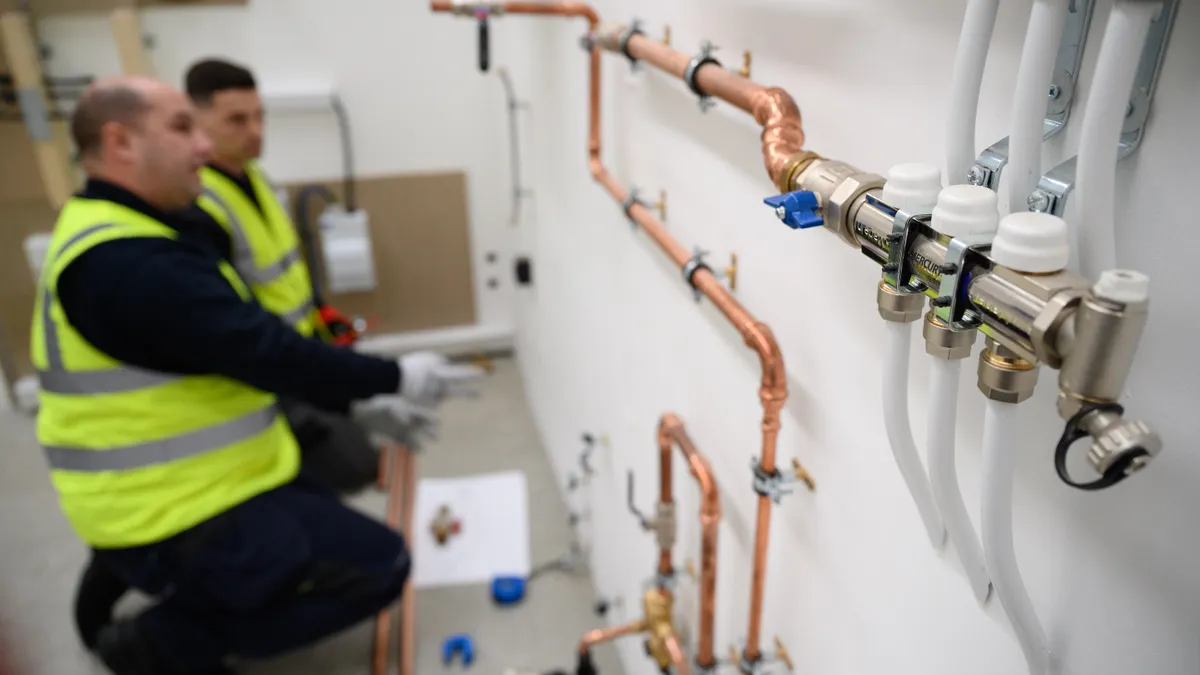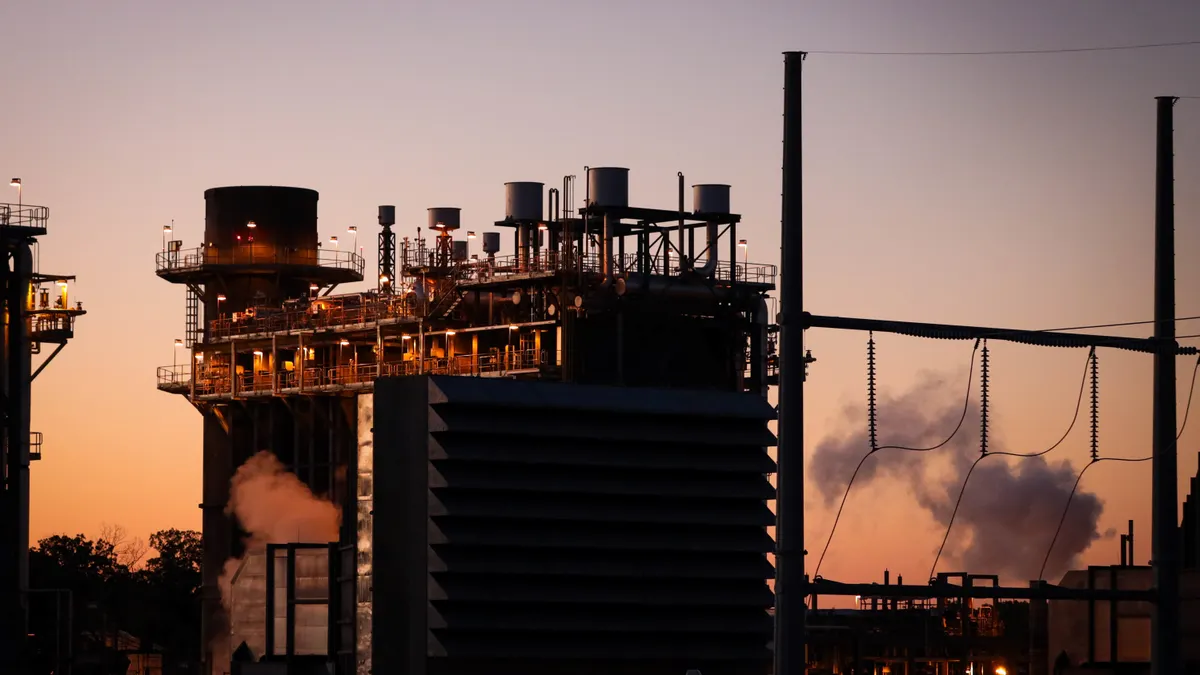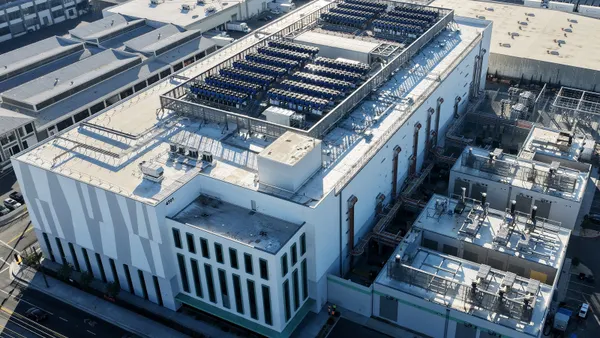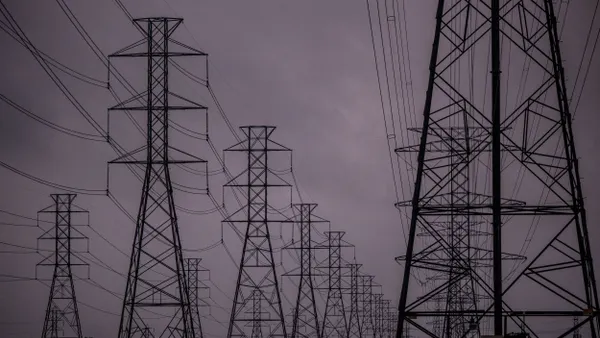Dive Brief:
- Investments in residential heat pumps, batteries and solar arrays could meet 100% of projected electricity demand growth from AI data centers through 2029, according to a report from the pro-electrification nonprofit Rewiring America.
- The large tech and infrastructure companies behind the U.S. AI boom could unlock more than 93 GW of grid capacity at costs comparable to building a new fleet of gas power plants by paying 50% of the cost of heat pump upgrades and 30% of the cost of onsite solar and storage, Rewiring America said Thursday.
- “Hyperscalers are already thinking creatively about how to meet their growing power needs, and this report presents a solution that brings households into the conversation,” Rewiring America CEO Ari Matusiak said in an email.
Dive Insight:
U.S. utilities requested about $29 billion in rate increases in the first half of 2025, according to PowerLines, a nonprofit that advocates for pro-consumer regulatory reform.
The sharp rise in rate hike requests and in already-approved rate increases show that “the status quo isn’t working for households,” Matusiak said. “There’s a way to rebalance the equation and ensure there’s something in it for Americans.”
Matusiak’s group said rising electricity prices compound the consumer burden of broad-based inflation and the pending expiration of federal tax credits for energy-efficient appliances and distributed energy resources, which experts say could push utility rates higher still.
Right now, hyperscalers and the utilities that support them are looking to “centralized, utility-scale solutions, like building fossil fuel or nuclear power plants” to meet near-term load growth projections, Rewiring America said. Instead, it said, targeted residential energy investments could effectively offset the loss of federal energy tax credits, free more than 100 GW of grid capacity over five years and lay the foundation for a more efficient, resilient power system over the longer term.
Those investments could also help hyperscalers and utilities sidestep five-to-six-year lead times and escalating construction costs for combined-cycle gas turbines while reducing exposure to volatile natural gas prices, Matusiak said.
Reported capital costs of combined-cycle power plants to be deployed around 2030 now exceed $2,000/kW, up nearly 50% from plants with expected 2026 deployments, the clean energy group GridLab said in a report this month.
Hyperscalers’ heat pump investments should focus on households using inefficient electric space heating, water heating and air conditioning, Rewiring America said in last week’s report.
For example, the report said fully transitioning Georgia homes from electric resistance heat to heat pumps could free up about 1.5 GW of capacity, or 22% of the state’s projected data center load growth through 2029. Swapping out traditional air conditioners for heat pumps in Texas could unlock 3.9 GW of capacity, or 23% of expected data center load over the next five years.
Heat pumps are two-way climate control devices that can heat or cool homes, depending on the season. By covering 50% of the upgrade cost, the report said hyperscalers could knock the upfront expense down to about $9,000 for a typical home — less than the combined cost of a new furnace and air conditioner.
To unlock 109 GW of additional grid capacity through distributed solar and storage, Rewiring America said hyperscalers would only need to cover 30% of installation costs — the same subsidy provided by the expiring federal home energy tax credit — to reach cost parity with new gas generation.
But that would require every “single-family household in the U.S. [to install] a home battery, and those with a suitable roof [to install] a 5-kW solar system,” the report said. Rewiring America also based its gas-parity projection on a reduction of at least 40% in installed solar and storage costs, driven by economies of scale, streamlined permitting and lower customer acquisition costs.
Though ambitious, the Department of Energy’s January report on virtual power plants and more recent research by the Smart Electric Power Alliance and Sparkfund suggest Rewiring America’s 109-GW target is plausible.
DOE estimated U.S. VPPs — which aggregate customer-sited batteries, thermostats and other latent energy sources — could reach 80 GW to 160 GW by 2030, offsetting 10% to 20% of peak grid demand. SEPA and Sparkfund said distributed capacity procurement, an emerging utility-led approach to VPP deployment, could supply a significant amount of the necessary capacity.
Distributed capacity procurement is just one of several strategies hyperscalers and utilities could pursue to offset expected AI load growth, Matusiak said.
Other promising strategies include clean transition tariffs supporting distributed capacity rather than new generation and scaled-up, performance-based contracts with third-party VPP aggregators, he said.
And in some hot data center markets, traditional utilities might not need to be directly involved at all.
“In competitive wholesale markets, such as [the Electric Reliability Council of Texas], data centers could contract directly with DER aggregators that monetize grid services,” Matusiak said.













